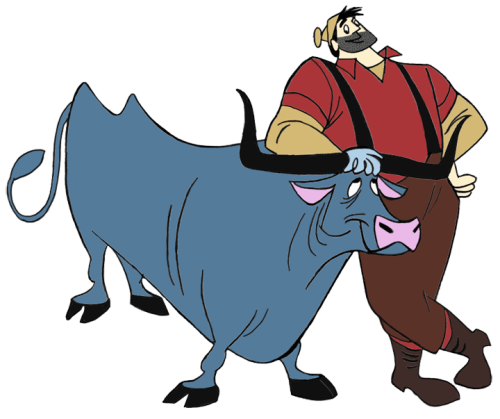This Paul Bunyan day, let’s talk about the importance of teaching folktales, tall tales and legends to our students throughout the year.
In case you’re as confused as I was about the difference between the three, allow me to share what I’ve learned. Folktales are stories that have been told since long ago and passed down from generation to generation. They originate from a specific county or region and will often reflect different aspects of that particular culture. Often times, they teach a lesson and contain elements of fantasy such as speaking animals. Many people describe legends and tall tales as types of folktales. Legends are stories based on real events from long ago, but there are subtle embellishments describing the heroic actions of the protagonist. Tall tales are legends separated only by the more obvious examples of exaggeration.
 Paul Bunyan is a tall tale filled with such instances. It’s based on a French-Canadian lumberjack named Fabian who moved south to Michigan after the Civil War and joined a logging crew. At the time, he was considered a giant at 6 feet tall, towering over the average man who stood at only five feet. The legend began to develop and grow as people started sharing stories of his two sets of teeth and his gigantic hands. His aggressive personality brought him to the spotlight, and after he was killed in a fight, the tall tales began.
Paul Bunyan is a tall tale filled with such instances. It’s based on a French-Canadian lumberjack named Fabian who moved south to Michigan after the Civil War and joined a logging crew. At the time, he was considered a giant at 6 feet tall, towering over the average man who stood at only five feet. The legend began to develop and grow as people started sharing stories of his two sets of teeth and his gigantic hands. His aggressive personality brought him to the spotlight, and after he was killed in a fight, the tall tales began.
The stories continued for 30 years before journalist James MacGillivray wrote the story down in a local newspaper. National exposure came a couple years later when an illustration of him was used in an advertisement for Minnesota’s Red River Lumber Company.
Now, after years of retelling and added embellishments, there are many Paul Bunyan adventures in print. These larger-than-life details, such as when Paul’s parents put him in a lumber wagon to sleep because he was too big for a bed, or how it took the milk of 24 cows to keep his bottle full and barrels of cereal to keep his belly full, make these stories perpetual classroom favorites.
Tall Tales in the Classroom
Tall tales share excitement and action with students and provide some cultural literacy too.
Here are some ideas to use in the classroom that enable you to share these classics and get the students thinking creatively and critically at the same time.
- Stories like Paul Bunyan’s are perfect to model figurative language. Metaphors, similes and hyperbole are used to emphasize his massive size. Have students combine all three and play a version of the classic game of telephone. After all, this is probably how the tall tale originated.
- Offer a story or sentence to the first player, secretly and orally. Use a hyperbole, simile or metaphor to emphasize actions from the Paul Bunyan story. For example, you might say, “Paul Bunyan found an ox as blue as the sea who was larger than a mountain.”
- The next person has to share the same meaning with a different simile or figurative statement. Or, the basic game of telephone can be played to see how the story changes after it has been orally shared one student at a time.
In addition to figurative language, tall tales have content specific vocabulary related to the context of the story. In Paul Bunyan, vocabulary is tied with the great outdoors, animals and lumber; and in Johnny Appleseed vocabulary is related to orchards, seeds and the life cycle of the apple. 
- Have students discover the characteristics of tall tales by comparing different stories. Students can listen to or read the story of Johnny Appleseed, Pecos Bill and Rip Van Winkle and use their deductive reasoning skills to figure out what the three have in common.
- Because tall tales are based on real people, students can read closely to find out what elements of the story could be real and what elements are most likely embellished.
- Share the story of Paul Bunyan through a different modality, such as a video or song. How does the melody enhance the theme or action? How do the images reinforce the story?
Tall tales, fables, folktales and legends are great mentor texts for reading or writing workshop. Students can model the figurative language, mix elements of fantasy and reality, create tall tales of their own life, add content specific vocabulary and integrate embellishments that let their creativity shine.
So while this year is coming to a close, and it might be too late to work in Paul Bunyan day festivities, fear not—Johnny Appleseed Day is September 26!








Leave A Comment